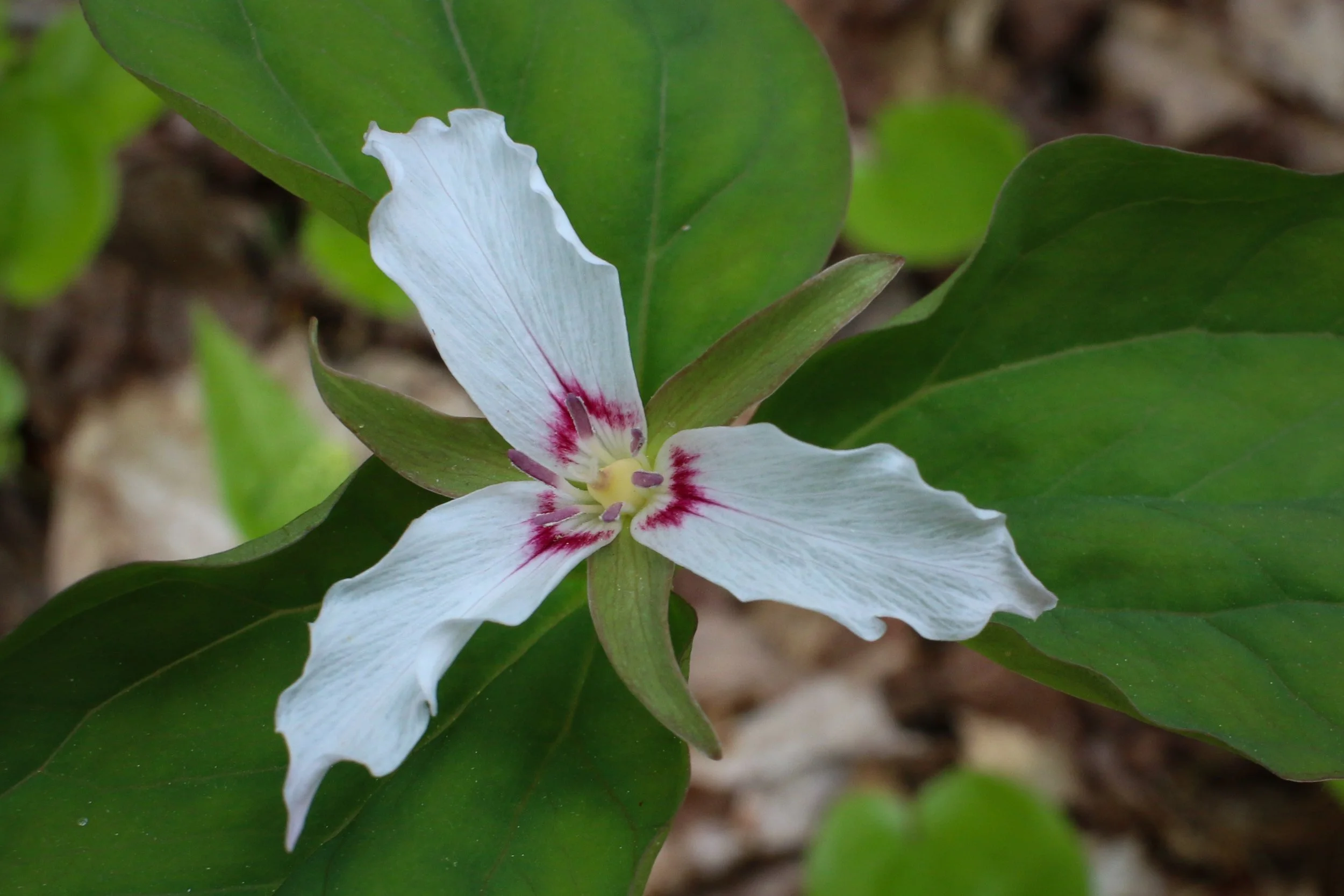Nature note: Trilliums are among Maine’s flashiest spring flowers
Red trillium at my home in Hancock County. (Photo by Aislinn Sarnacki)
One of the first wildflowers that I look for in the forest around my house each spring is the red trillium (Latin name: Trillium erectum L.). Its beautiful, large, crimson flower blooms on a tall, slender stem. With three long, red petals, it’s impossible to mistake for any other plant.
I purchased a few red trilliums from a vendor selling native plants at a local flower show a few years ago. I planted them in the forest of beech, birch, sugar maple, and red oak trees that surrounds my house. Then — not being a green thumb — I just hoped they’d return the following year.
I was lucky. The next year, two trilliums popped up. The following year, two popped up again. They aren’t spreading, but they’re surviving. Perhaps I should add a few more to the forest.
Red trilliums are common throughout Maine. They bloom in the early spring. Around my house, I see them in mid-April, but Maine is a big state. I live about halfway up the coast. I imagine red trilliums bloom earlier down south and later up north and in the mountains.
Red trilliums are known by many other common names including wake robin, purple trillium, bethroot and stinking Benjamin. The name stinking Benjamin is due to the faint, unpleasant odor the flower emits.
Maine is home to two other trillium species that I see less frequently: Painted trillium (Trillium undulatum) and large white trillium (Trillium grandiflorum). The other day (mid-May), I saw a few painted trilliums at the Orono Bog Conservation Area in Orono. I spent a while photographing them. A young couple walked past me on the trail as I was crouching down among the woodland plants. I pointed out the flowers to them, but they just nodded politely and continued on their walk. They didn’t seem particularly interested.
Painted trillium at Caribou Bog Conservation Area in Orono. (Photo by Aislinn Sarnacki)
Great white trilliums are rare in Maine, which is the edge of their range. I’ve never seen one in the wild. To learn more about them, check out the Maine Natural Areas Program fact sheet at https://www.maine.gov/dacf/mnap/features/trigra.htm.


